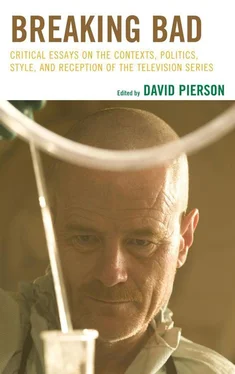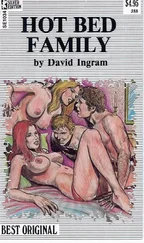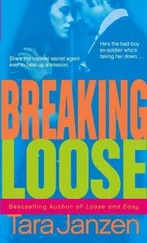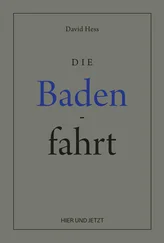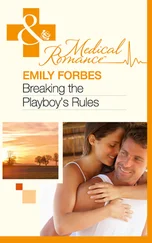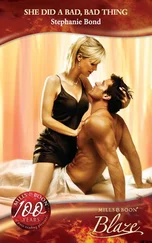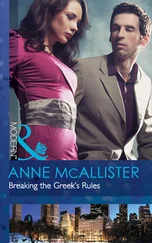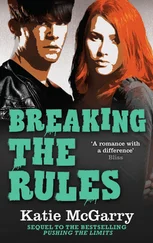Many énoncés have a more general ability to fold in on themselves in places, to appear here and there, as if in relief, to peel off a fine film of themselves on which is engraved a few indications of another nature (or of another level) having to do with production and not the product…. Enunciation is the semiological act by which some parts of the text speak to us of this text as an action. (20)
This enunciation speaks to us , it signals to us, it stands out in a world which tends to conceal itself; it is constituted through address, and as such it supposes, even abstractly, even textually or “filmically,” an addressee, who will mould his or her gaze to it and recognize in the process a collusion effect, a wink, an invitation to depart from his or her traditional role. Here, in our view, we can see the primordial function of second-degree style: the recognition, on the level of the enunciated material itself, of a target, a destination. When the camera gradually slips out of its role to express a given situation and the characters’ interactions, when it “forgets” to follow visually an action which was nevertheless until that moment determinative in order to frame Walt’s face, and when this face is obviously a mask of pain and guilt that the off-screen words spoken by his son aggravate, it is difficult not to feel that some instance is speaking directly to us through the effects produced by the énoncé . This thing that concerns “production and not the product,” which refuses to let it be carried along by a diegesis enclosed within the narrow boundaries of narrative, is the surest marker of Breaking Bad ’s modernity, its inimitable belonging to the discursive mode.
To say that these stylistic devices are new to television would clearly be incorrect. On the one hand, as soon as one departs from a fictional mode to take up news, variety, and reality programming, “visible” enunciation ceases to be the exception and becomes the norm. On the other hand, there are many historical examples, even fictional ones, of such self-referential pirouettes, winks to the viewer and breaks by turns subtle and coarse between the diegetic world and the act that makes it what it is. Yet, systematically, these have been the work of television programs whose dominant pragmatic mode is humor: one thinks of M.A.S.H , or more clearly still of Monty Python. In the category of more traditional sitcoms, a program such as Seinfeld in the 1990s ushered in a new era with an offbeat style of humor that was not without a degree of self-deprecation; more recently entire series such as The Office , Extras, and Curb Your Enthusiasm have opened up an explicitly reflexive tone using by turns transtextuality and the use of cameos, but also through their use of formal experiments which undeniably draw the viewer’s attention to their “produced” quality. These programs, however, all share a humorous approach.
More effort is required to find examples of dramatic series that reveal their process of enunciation and no program seems to truly appear on the horizon before the advent of “quality TV” in the 1990s. The examples given are almost always the same: E.R. , whose authors even pushed their formal boldness to the point of creating entirely live shows (with the consequences one can imagine on the level of enunciation); Ally McBeal , which blended realism with “fantastic effects” that were incompatible with the transparency we are accustomed to in American TV series; and a few others ( NYPD Blue and Northern Exposure ). These remain exceptional examples, however, and very often involved situations going awry in ways which, while not strictly speaking comedic, tended toward that vein. Breaking Bad , on the contrary, is part of a quite different pragmatic mode whose corollary can be found in recent contemporary series, such as Six Feet Under , The Sopranos , Entourage , Unscripted , and The Walking Dead . These are the category of programs most similar to Breaking Bad . The mutations under way are thus profound, and concern what Pierre Bourdieu (1971) would have termed the “symbolic and cultural capital” of television series. In this context, we must avoid treating the work on enunciation discussed in the present article in isolation and place it within a broader but no less coherent ensemble of strategies which share an ability to create a correlative position with respect to an aesthetic tradition which tends to accord greater value to cinematic practices than to those more specifically associated with television. What does a program such as Six Feet Under , for example, propose to do if it is not to “[reach] out to an entire tradition in modernist cinema that thematizes life and death, dream and reality”? (Feuer 2007, 151). What do The Sopranos , The Walking Dead , and Deadwood do if not exploit in television the trend toward the revision of genres in a certain kind of recent auteur cinema?
Naturally, this question engages with the entire phenomenon of one’s interpretative community, which Stanley Fish (2005) defines as “a professional community whose norms, ideals and methods determine an interpretation’s validity.” What Fish calls “interpretation” also holds for judgments of the quality of a work or a given group of works, as Feuer (2007) points out:
The judgment of quality is always situated. That is to say, somebody makes the judgment from some aesthetic or political or moral position…. Reception theory teaches us that there can never be a judgment of quality in an absolute sense but that there are always judgments of quality relative to one’s interpretative community. (145-46)
In support of this position, it would be easy to find many reactions to Breaking Bad which are completely the opposite of our own. The reactions of critics, for example, who single out in order to denounce the moral lapses, exaggerated expressions of a pernicious violence and complacent view of drug trafficking. It is essential to acknowledge that the interpretive community to which we belong (which to simplify we could call that of television studies scholars) tends to prefer formal readings to thematic ones and “modernist” strategies to the strategies of transparency typically found in the televisual tradition. And to the extent that this is precisely what the new wave of post-HBO quality television tends to offer, the phenomenon as a whole can be interpreted as an aesthetic and strategic position of cable networks. Let’s look at this state of affairs with respect to the AMC Network on which Breaking Bad is broadcast. AMC is a little less well known than HBO but is offered in most of the basic cable packages in the United States. AMC has been around since 1984. Initially, its mandate was to show classic Hollywood films (for the most part from before 1950) in their original “uncut” and not colorized version. But, by 2000, under pressure from its advertisers, the network began showing more recent films and since 2003, has begun producing its own original fictional series, such as Mad Men . These mutations in AMC’s programming are typical, we believe, of the changing role of cinema on TV: at first sufficiently popular to make up the bulk of a specialized network’s programming, repertory films gradually lost ground in favor of contemporary films, which have increasingly been replaced in turn by original series. This is perhaps easy to understand: the role of these original series in today’s landscape is the same, in terms of cultural prestige and aura, as that of films from the 1970s to 2000, and because they are original and exclusive content they contribute better than films to the network’s brand identity.
Читать дальше
